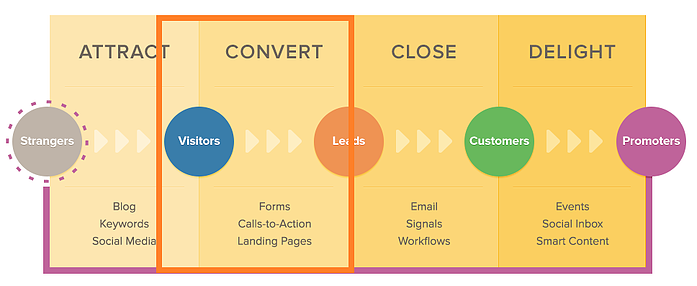Question: Should maintaining a blog be a priority for your company in 2023? The Short answer is: Yes, absolutely! Let’s look at why.
First off, regularly published blog articles help drive traffic to your website.
Raise your hand if you’d like to see more people visiting your site. Yeah, me too.
Now think about all the ways people might find your website:
- They could type your company name directly into Google, but that’s for an audience you already have. You’re looking to generate attention from people who haven’t discovered you yet.
- You could pay for traffic by buying an email list, but unsolicited emails are an easy way to drive people AWAY from your business. Blasting people with what amounts to spam and hoping some people open and click through on the emails is sad, and in some cases illegal.
- You could pay for traffic by placing tons of paid ads through AdWords which isn’t illegal but is prohibitively expensive especially if you’re in a competitive market. And the second you run out of money, your traffic stops coming, too.
The other way that people might find your site is by entering a common question into Google like “where can I find [Your Product] in [Your City]?”
If you’ve optimized your site through Search Engine Optimized (SEO) blog content, your company will appear on Google as a result of that query.

Let’s break down how it works.
Think about how many pages there are on your website. Probably not that many. And think about how often you update those pages. Probably not that often.
1. Blogging is a great way to solve both of those problems
Every time you create and publish a blog post, it’s one more indexed page on your website, which means another more opportunity for you to show up on the Google’s search engine results page (SERP) and drive traffic to your website organically.
We’ll get into more of the benefits of blogging on your SEO a bit later, but it’s also one more cue to Google and other search engines that your website is active, and they should be checking in frequently to see what new content to surface.
2. You can repurpose blog content for social media
Blogging for your business also helps you get discovered via social media. Every time you create a new article, you’re creating content that people can share — on Twitter, LinkedIn, Pinterest, Facebook, wherever — which helps expose your business to a new audience that may not know you yet.
Fresh blog content also helps keeps your social media presence active, as every article can include a call to action to check you out there.
Instead of asking your social media manager to constantly create brand new content for social media your blog can serve as that repository of content.
The symbiosis of blog and social media can’t be understated.
3. A blog helps convert traffic into leads
Just as every blog post you write is another indexed page, each new post is an opportunity to generate new leads by adding a lead-generating call-to-action to every blog post.

Often, these calls-to-action lead to things like free ebooks, whitepapers, fact sheets, webinars, trials, or basically, any content asset where someone might need to share their contact info in order to access.
Think of the process like this:
A. User enters a relevant question into Google and discovers one of your blog posts on the SERP.
B. User reads you blog because the meta data is targeted to their needs or interests.
C. User sees call-to-action for a free offer
D. User clicks call-to-action and gets to a landing page with a contact form that lets them access the free offer.
And now you’ve just generated a lead.
In fact, 99.9% of the blog posts we write contain a call to action link. That is one of the key ways to turn your blog traffic into leads for your sales team. Think about it. Sales reps don’t have to create information assets from scratch when they can refer directly to the content we’ve written for you.
4. Blogging builds authority
The more blog content you have, the more people can trust your knowledge and expertise.
When users find answers to their everyday questions via blog posts provided by Sterling Content, they’re much more likely to come into the sales funnel trusting your brand — even before they were interested in purchasing anything from you.

Users who read your blog posts will typically enter the sales funnel with greater knowledge of your products and services, your industry at large, and your place in the market, making for a more productive sales conversation rate.
5. Blog content is evergreen
Imagine that Sterling Content publishes a weekly blog post for you on Monday. Let’s say that blog post gets you 100 views and ten leads by Tuesday. You get another 50 views and five leads by Wednesday as a few more people find it on social media. After a week, most of the fanfare from that post dies down, and you’ve netted 150 views and 15 leads.
And since that post is now ranking on Google, it means that for days, weeks, months and years, traffic will continue to come in thanks to that blog post.
For our business, 90% of the leads we generate every month come from blog posts published in previous months.
We call these types of blog posts “compounding” posts. Essentially, by writing about identical or lateral topics in multiple posts over time, you strengthen the power of each individual blog post.

To me (and hopefully to you), this demonstrates the scalability of business blogging.
While you might not see immediate results, over time, you’ll be able to count on a predictable amount of traffic and leads for your business without any additional resource investment — the work to generate that traffic and those leads are already done.
If you’d like to learn more about the long-term impact of blogging and how to reap even more benefits from the blog posts that are ranking in organic search for your business, check out this article.
Or better yet, give us a shout and we can tell you more. (See! That’s our call to action link right there, and it’s already working!)
And keep checking in to the Sterling Content blog for more pertinent posts about blog management and content creation.




